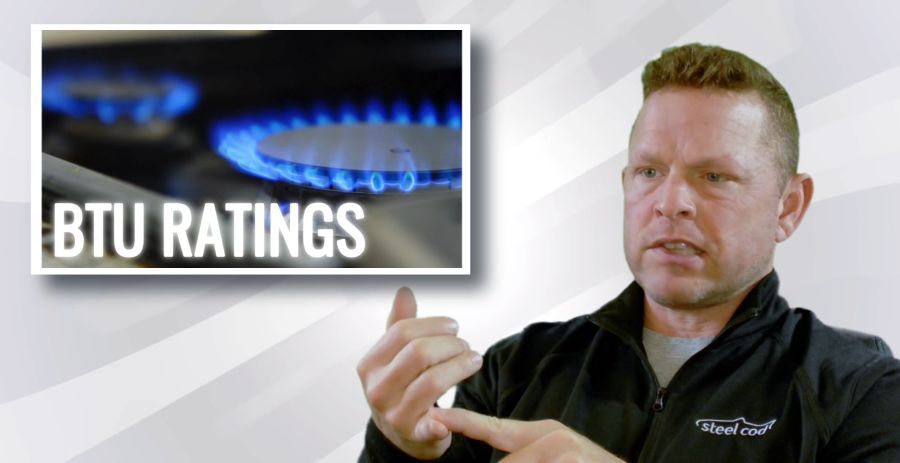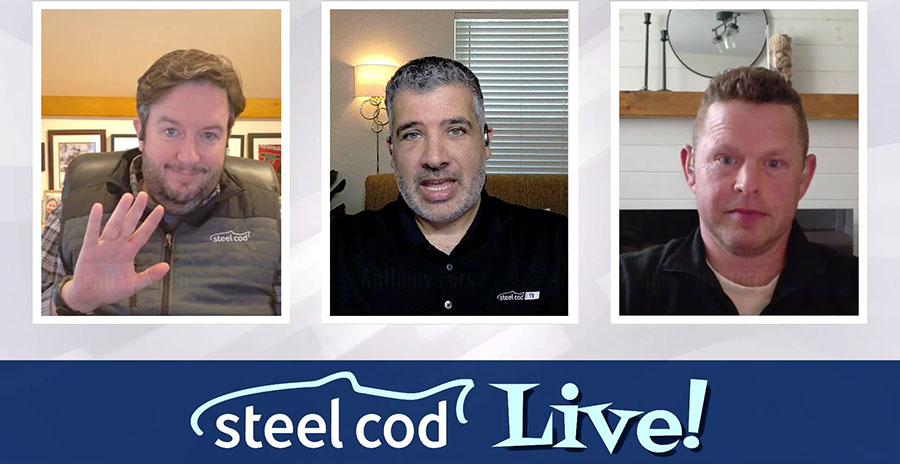BTU Ratings
Are We Selling Power or Actual Cooking Performance?
BTU Ratings
This week we challenge one of the most overused selling points in the appliance industry: BTU output. We’ll unpack what those numbers actually mean (and don’t), explore how burner design affects cooking results, and give you the insights you need to shift the conversation from spec-chasing to real performance.
Top 5 Burner Performance Drivers
From flame shape to fuel efficiency, this week’s Top X breaks down the five most important factors drive burner performance. We're spotlighting the brands that deliver power with purpose — not just raw BTUs, but smart engineering that makes heat usable. If you're still selling off spec sheets, you're missing the point. This is where real cooking performance begins. [Updated: May 7, 2025 at 2:41pm ET]
Beyond the Burners: What BTU Ratings Don’t Tell You
This week on Steel Cod Live!, Anthony, Tom, and Jon wrap up the burner performance conversation with a real-world look at BTUs, flame design, and what actually matters at the point of sale. From spec myths to simmer stability, this episode brings the whole week into focus — and gives you the talking points to turn raw numbers into smarter sales.
Recap
Key Questions and Answers
How big of a problem is uneven heat on high-BTU burners?
Bigger than most expect. A powerful burner can hit 20K BTUs but still leave food unevenly cooked if heat concentrates in the center. Lab testing shows over 100°F variance from center to edge in a 12" pan on some burners. That’s not high performance—it’s hot chaos.
What’s a quick phrase to separate power from performance?
“Power is how hot it gets. Performance is how well that heat’s used.” BTUs tell you how much heat is available. Performance depends on flame shape, coverage, and control—what actually makes food cook evenly and precisely.
How do I shift the conversation when a customer fixates on max BTUs?
Acknowledge the number, then reframe:
“You’re right—this puts out serious heat. Let’s look at how that power gets distributed, because that’s what actually affects how your food turns out.”
It’s about helping them shift from spec chasing to results thinking.
Should I lead with BTUs if a customer expects it?
Yes — but only to build trust. Then guide them toward what matters:
“This one hits 22K BTUs, but what sets it apart is how evenly it spreads that heat across your cookware.”
You’re not avoiding BTUs—you’re putting them in the right context.
How important is a simmer burner for customers focused on searing?
Extremely. Simmering isn’t just for sauces—it’s for 60% of real-world cooking. A dedicated simmer burner offers stable low temps under 140°F, which standard high-output burners struggle to maintain without flickering or scorching.
How do high-BTU burners affect ventilation needs?
A lot. Every 10K BTUs needs about 100 CFM of hood power. So a 20K burner alone needs more than many over-the-range microwaves can provide. Without proper venting, you’ll get lingering smells, greasy surfaces, and poor air quality.
Will a wok user notice the difference on a true wok burner?
Definitely. Wok cooking isn’t just about power—it’s about intensity and shape. A true wok burner has a vertical flame cone and often recessed design to deliver high heat to the right part of the pan. Standard burners can’t replicate that.
Does more power mean shorter burner life?
It can if the design isn’t up to it. High heat increases wear on igniters, valves, and surfaces. Without things like brass components or ceramic insulation, these burners wear out faster. Power’s fine—as long as the build can handle it.
What’s a better analogy for power vs. performance?
“It’s like revving a car in park—lots of engine noise, but you’re not moving.”
Or:
“Stacking all your grill coals in one corner—tons of heat, but it’s not hitting your food evenly.”
Great cooking is about control and coverage, not just raw firepower.


